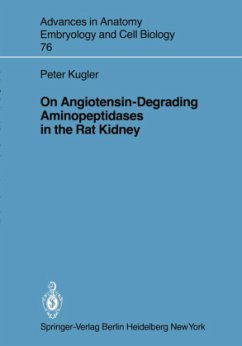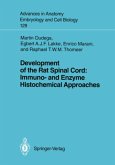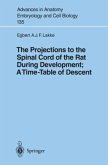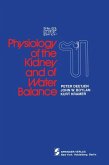The octapeptide angiotensin II (ANG II, Fig. 1) is the key effector substance of the renin-angiotensin system (RAS) (Werning 1972, Page and Bumpus 1974, Hierholzer 1977, Vecsei et al. 1978, Johnson and Anderson 1980 lit. ). ANG II is formed in two enzymatic steps. Renin acts on renin substrate, a glycoprotein, to produce angiotensin I (ANG I, a decapeptide), which in turn is acted upon by converting enzyme to form ANG II (Skeggs et al. 1968, Fig. 1). Renin substrate (angiotensinogen) is produced mainly in the liver (Page et al. 1941) and is a constituent of the ~-globulin fraction in the circulating plasma (Plentl et al. 1943). The two enzymes involved in the formation of ANG II from renin substra te are formed at various sites in the body. Renin (E. C. 3. 4. 99. 19) is produced mainly in the granular epithelioid cells of the kidney (Cook 1971, Taugner et al. 1979, Davi doff and Schiebler 1981), and converting enzyme (CE, E. C. 3. 4. 15. 1) occurs chiefly in the lung (Ng and Vane1967, Bakhle 1974 lit. ) as well as in numerous other tissues, such as the juxtaglomerular apparatus of the kidney (Granger et al. 1969, 1972) and the brush border of the renal proximal tubule (Ward et al. 1975, 1976; Ward und Erdos 1977). The biological effects of ANG II are numerous.
Hinweis: Dieser Artikel kann nur an eine deutsche Lieferadresse ausgeliefert werden.
Hinweis: Dieser Artikel kann nur an eine deutsche Lieferadresse ausgeliefert werden.








